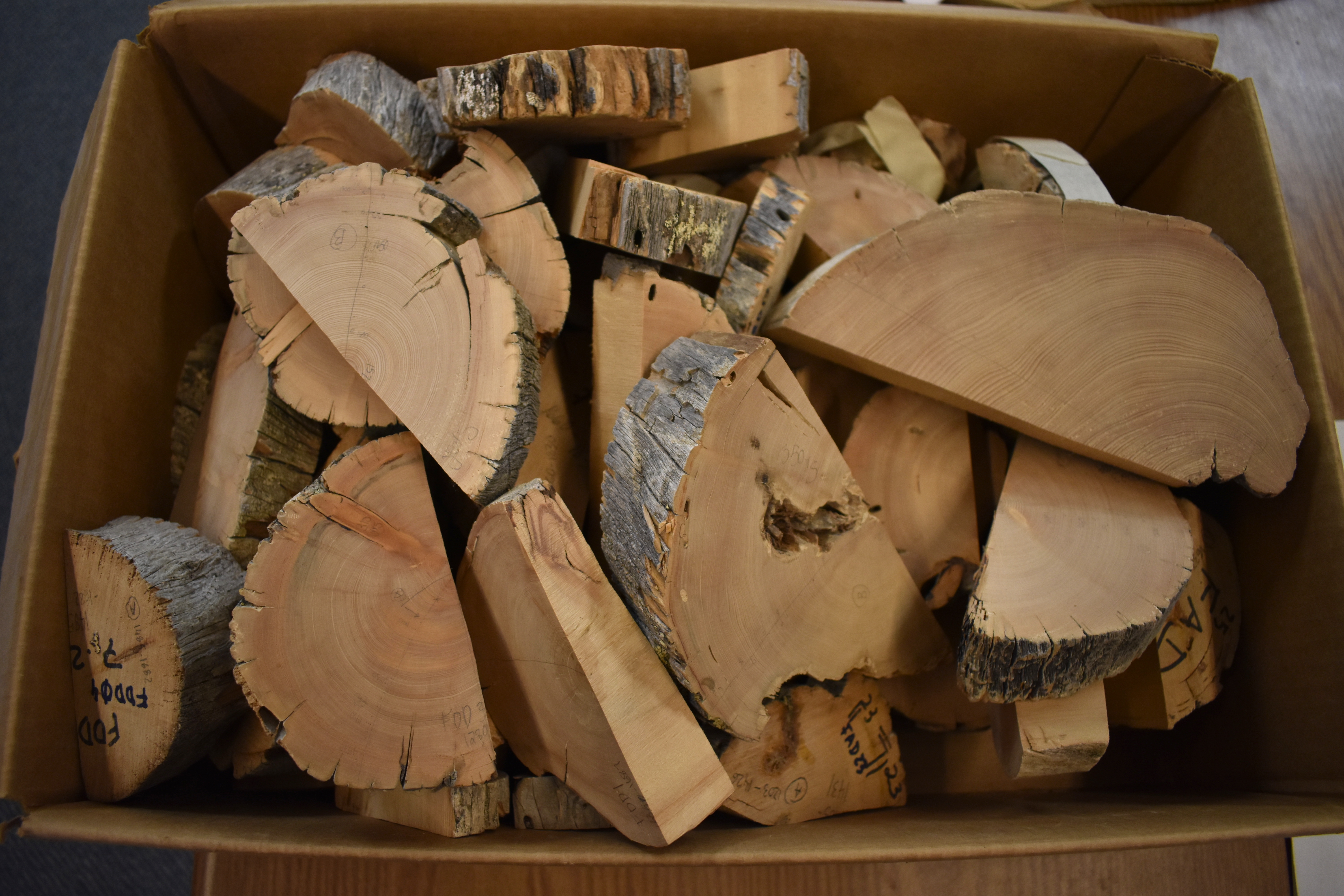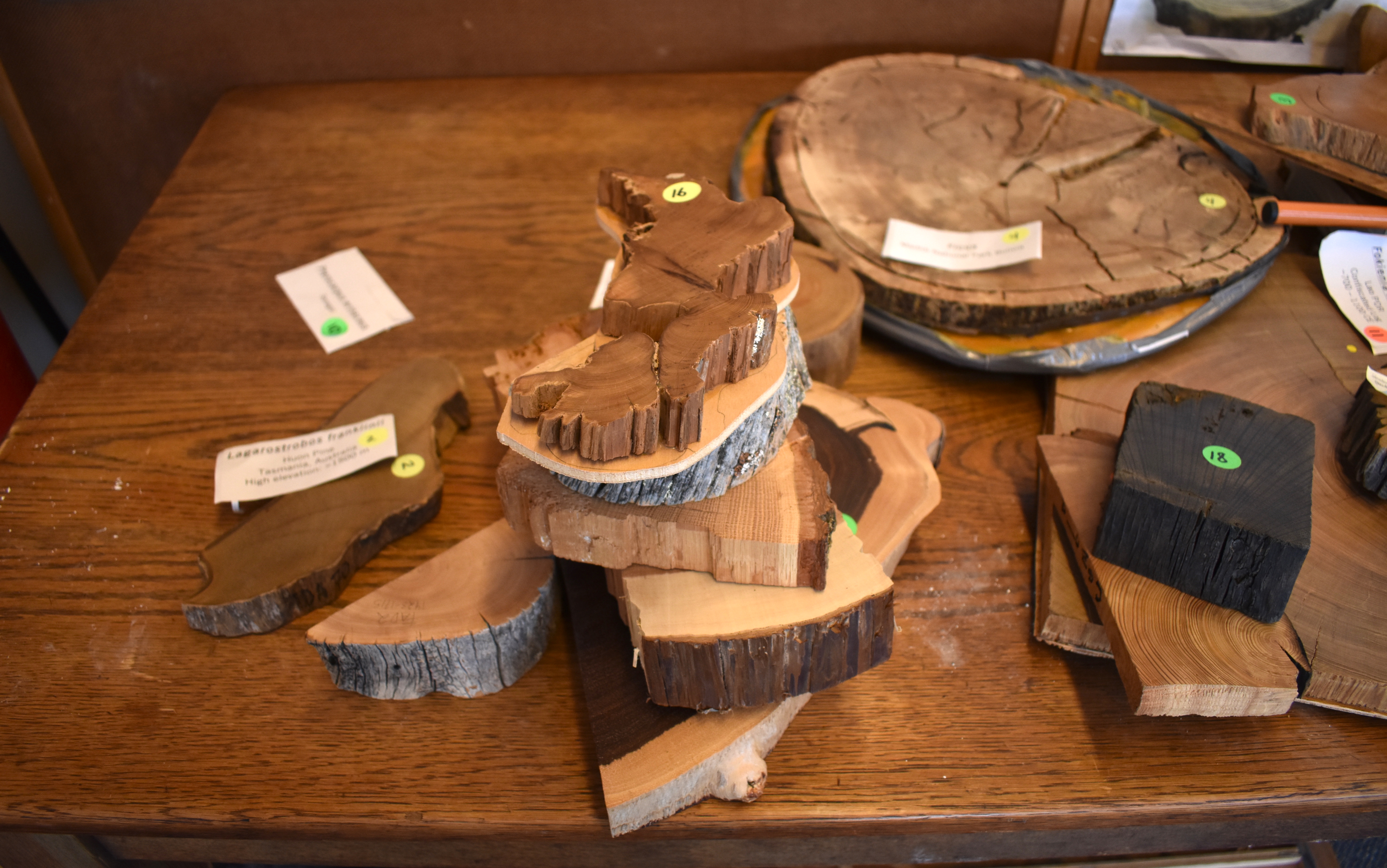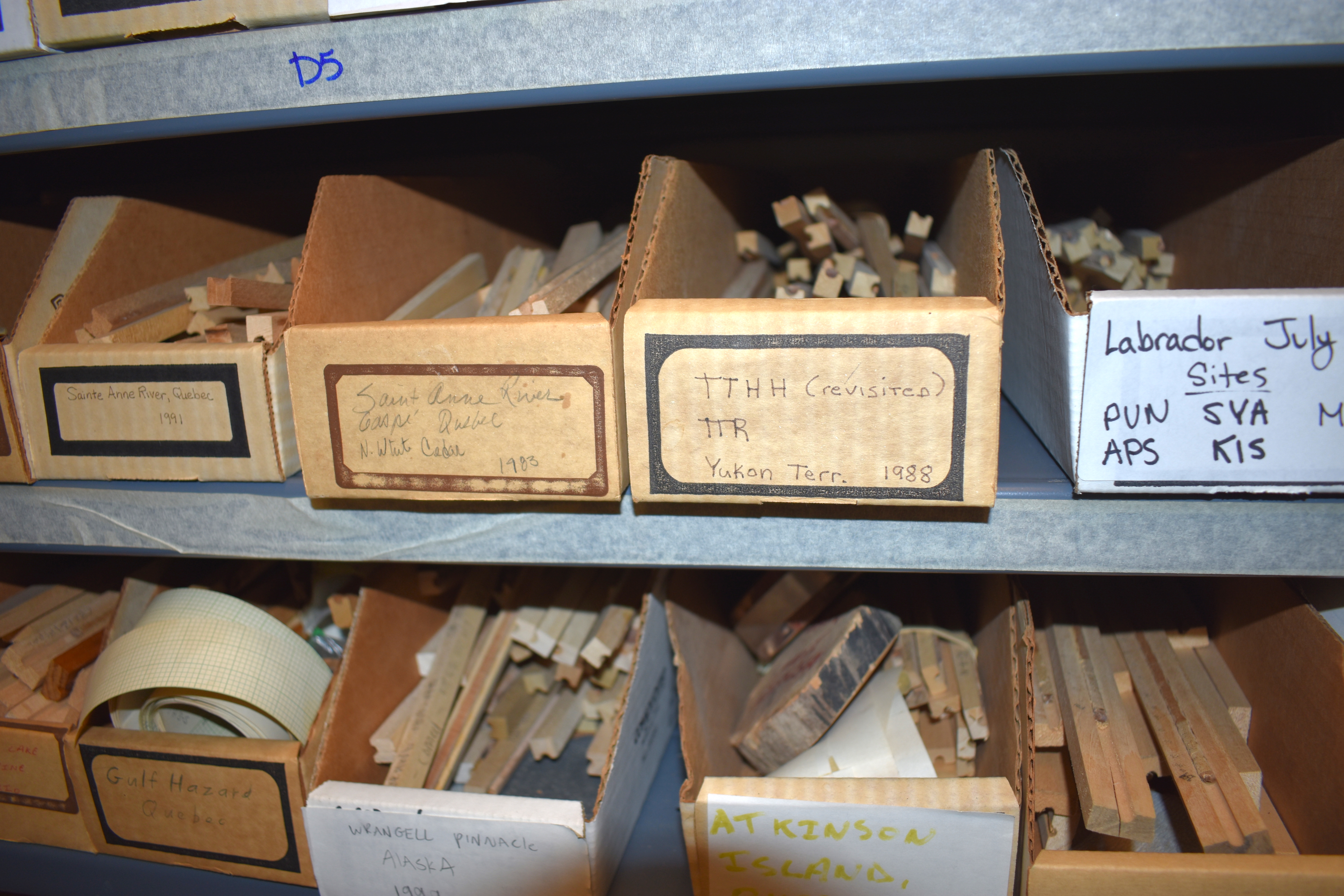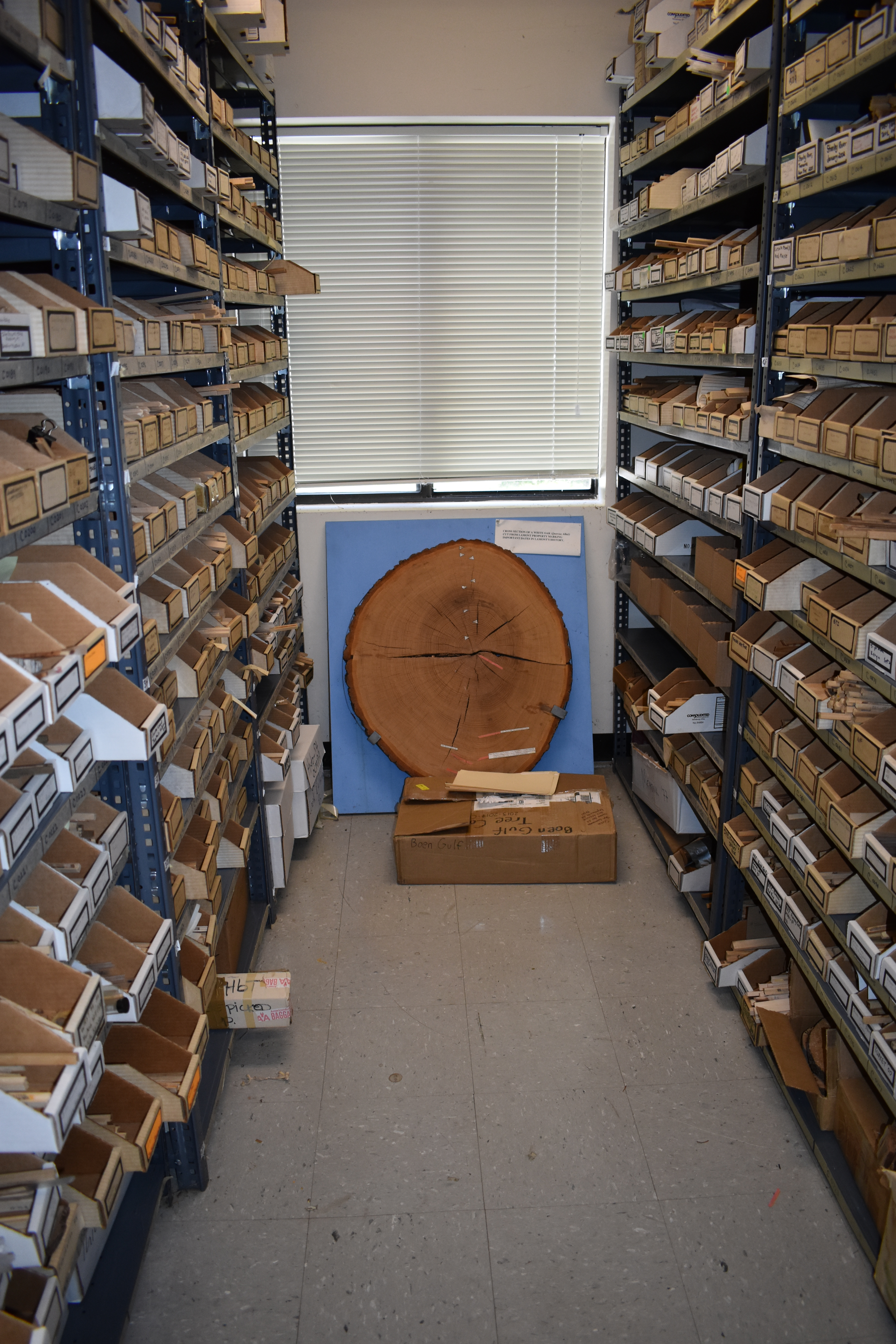How scientists use Arctic trees to map climate change
The Tree Ring Lab at Columbia University uses the fairly new science of dendrochronology to track climate shifts, fire, glacier movements, and more.

The first thing that hits you is the smell of wood. Fresh and crisp, reminiscent of a carpenter’s shop or dried chippings. It’s not surprising, given the venue: The Tree Ring lab on Columbia University’s Lamont-Doherty Earth Observatory in Palisades, New York.
The “lab” is more a large, two-story building, where pieces of dead trees from all over the world are propped up against walls, on display on tables and piled up in boxes. These slabs, as well as smaller samples from living trees, are studied and analyzed using dendrochronology, the clunky-sounding technique of tree-ring dating.
Using trees with Arctic origins, the scientists in the Lab have reconstructed past climatic patterns and environmental change in the region. Beyond providing valuable insight into how the environment reacted to events like fires and climatic shifts in the past, these observations can help predict how the Arctic environment may respond to the inevitable warming of the future.
Dendrochronology (“dendro” from the Greek word meaning “tree”) is a fairly new science, its origins dating back to the turn of the last century.
Living in what was then the Territory of Arizona, astronomer A.E. Douglass went searching for an extensive weather record for his research, only to come up short. He then looked at the trees in the region, which showed a clear pattern of wide and thin bands that correspond to precipitation patterns — thin rings would indicate low precipitation, wide rings higher precipitation. Each ring seemed to correspond with a year, as trees in the region would only add new growth during the growing season, then “shut down” when it was dry.
Using these rings and the few precipitation records of the region, Douglass could determine how old a tree was when it was cut down, just by the pattern of its growth rings — and dendrochronology was born.

Today, scientists go beyond dating a tree, using the thousands of tree-ring records to infer glacial activity, climate and forest fires of the past. For some of these events, they look at unique indicators in the tree, such as “scars” from a fire. Other indicators are subtler.
In the sub-field of dendrochronology, dendroclimatology reconstructs past precipitation or temperatures in the tree sample’s site. The scientists first start with either a slab of wood collected from fallen trees or a long sample obtained from standing trees using a special drill. (In the field of dendroarchaeology, researchers use the novel technique of harvesting wood from historical buildings, furniture and ships.)
Scientists tend to choose trees to sample from regions that experience dramatic temperature or precipitation fluctuations in a year, such as the desert or high-latitudes, as trees at their limits provide the clearest signals. And while the Arctic may seem like an obvious choice for sampling, Brendan Buckley of the Columbia Tree Ring Lab explains that the practice didn’t come north until the 1930s when the largely self-taught dendrochronologist James Louis Giddings began to use it.
“The common thinking was temperature didn’t limit growth,” said Buckley. Instead, he explains, scientists were only looking at precipitation fluctuations in trees.
After this assumption was debunked, scientists from Lamont built on Giddings’ early Arctic work, establishing the Tree Ring Lab in the 1970s. Co-founded by Edward Cook and Gordon Jacoby, and later joined by Rosanne D’Arrigo, the Tree Ring Lab now has samples from trees across the Arctic, from Alaska to Nunavut to Siberia. These samples were vital in reconstructing Northern Hemisphere temperatures as far back as 1,300 years ago.

Describing these first trips to the Arctic, D’Arrigo painted a picture of science on the edge of a new frontier. The researchers would be dropped off in the middle of remote areas, looking for the best tree to sample — preferably an older tree in the tree line, but not too far south. One trip, in the summer of 1984, took them to the Thelon River Sanctuary in the Northwest Territories, where they chartered a plane from Yellowknife.
“It was like being dropped onto our own private planet,” D’Arrigo wrote in a short essay.
An obituary for Jacoby on Columbia’s Earth Institute’s website describes him as diving into freezing lakes to gather preserved dead trees from the low-oxygen water where they could remain preserved.
In a tour of the lab, Buckley showed off these hard-won prizes stored in a back closet neatly lined from top to bottom with containers labeled with the origin of the tree samples.

Heading towards the closet, we passed some equipment used to analyze samples, including computerized measuring systems, which can precisely measure rings, even very narrow ones that are the result of high-stress years.
The lab also has an x-ray densitometry system, which helps researchers determine the density of rings, important for discerning if a summer was longer than average in the Arctic.
Comparing tree rings with satellite images can also give scientists an idea of what a “good” year looks like in the tree ring record, helping them create a climate record of the area that starts well before satellites reached space.
Ben Gaglioti, a postdoctoral research scientist who works in the Arctic, is currently using the tree ring record in southwest Alaska to figure out when some glaciers become bigger in the area — as they grow, they sheer off trees, killing them.
“So the date of death of these trees precisely constrains when the glacier got bigger,” Gaglioti said.
While the Arctic may have been new territory for dendrochronologists 40 years ago, D’Arrigo says that it is increasingly hard to find spots that have been untouched. The field — thanks in part to growing research around climate change — has expanded a great deal.
“There’s an awful lot going on, and for good reason,” D’Arrigo said.